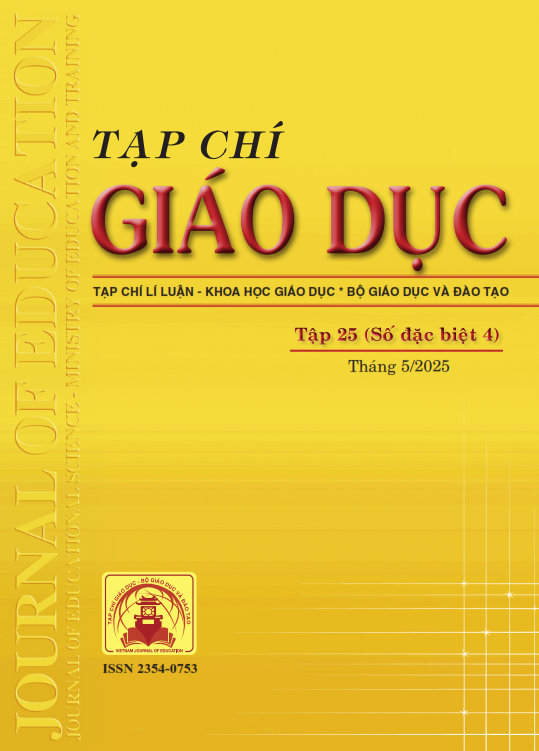Tích hợp công nghệ thực tế ảo tăng cường (AR) và Edpuzzle trong dạy học nội dung “Khoảng cách từ một điểm đến mặt phẳng” (Toán 11)
Tóm tắt
Nowadays, Augmented Reality (AR) is used to create 3D visual models, helping students easily visualize abstract concepts such as planes, points, and distances in space. This helps reduce the difficulty in imagining complex geometric objects. Meanwhile, Edpuzzle is used to design interactive video lectures, integrate questions and exercises right in the learning process, and support flexible testing of students' understanding. In this study, we use qualitative and quantitative research methods to propose a teaching process for Mathematics integrating AR and Edpuzzle technology, illustrating this process in teaching the content “Distance from a point to a plane” (Math 11). The combination of AR and Edpuzzle not only increases students' interest and motivation in learning, but also improves their ability to absorb knowledge compared to traditional teaching methods. Students learn more proactively, explore and practice through digital tools. At the same time, teachers also have more diverse resources and creative teaching tools to improve the quality of lessons.
Tài liệu tham khảo
Alqahtani, M. M., & Powell, A. B. (2016). Instrumental appropriation of a collaborative, dynamic-geometry environment and geometrical understanding. International Journal of Education in Mathematics, Science and Technology, 4(2), 72-83.
Alvarez-Alvarez, C., & Mischel, L. (2024). Edpuzzle for E-learning: A Study of Perceived Advantages and Limitations. International Journal of Education and Development using Information and Communication Technology, 20(01), 134-145.
Auliya, R. N., & Munasiah, M. (2020). Augmented Reality Affects Students’ Attitude and Conceptual Understanding sin Learning 3D Geometry. Jurnal Pendidikan Indonesia, 9(02), 203-212. Đỗ Đức Thái, Đỗ Tiến Đạt, Nguyễn Hoài Anh, Phạm Xuân Chung, Nguyễn Sơn Hà, Phạm Sỹ Nam (2019). Hướng dẫn dạy học môn Toán trung học phổ thông theo chương trình giáo dục phổ thông mới. NXB Đại học Sư phạm.
Gecu-Parmaksiz, Z., & Delialioglu, O. (2019). Augmented reality-based virtual manipulatives versus physical manipulatives for teaching geometric shapes to preschool children. British Journal of Educational Technology, 50(6), 3376-3390.
Lin, H. C. K., Chen, M. C., & Chang, C. K. (2015). Assessing the effectiveness of learning solid geometry by using an augmented reality-assisted learning system. Interactive Learning Environments, 23(6), 799-810.
Nguyễn Văn Thuận, Nguyễn Trần Lâm (2016). Những khó khăn ảnh hưởng đến khả năng khám phá và chiếm lĩnh tri thức của học sinh trong dạy học hình học không gian lớp 11 sách giáo khoa hiện hành và một số giải pháp. Tạp chí Khoa học Giáo dục Việt Nam, 134, 63-66.
Pamungkas, M. D., Rahmawati, F., & Dinara, H. A. (2019). Integrating GeoGebra into Space Geometry in College. 3rd International Conference on Learning Innovation and Quality Education (ICLIQE 2019). Advances in Social Science, Education and Humanities Research journal, 397, 999-1006.
Đã Xuất bản
Cách trích dẫn
Số
Chuyên mục
Giấy phép

Tác phẩm này được cấp phép theo Ghi nhận tác giả của Creative Commons Giấy phép quốc tế 4.0 .












